During the Summer Heat in the Desert, Water is Life
This has been a very hot and dry year in southern Arizona
As of early-July, most of the water sources in southern Arizona had dried up this year. It has been a brutally hot year for us. A friend and I visited one stretch of the Santa Cruz River south of Green Valley to see how things looked. In this riparian corridor, we could affirm the truism that "In the desert, where there is water there is life". Shortly after we settled down in our chairs, a Cooper's Hawk dropped by to drink. This bird likely hatched last year and, with a mix of gray and brown feathers, is considered a subadult. Perhaps next summer it will display the gray plumage of a full Cooper's adult.
I expect to see Vermilion Flycatchers throughout town in every park and school yard and field. That makes it a treat for me to find these birds in their true natural environment. This Vermilion was hunting from the creekside willow trees. We also saw female and immature Vermilions in the time we were there.
One of the really special species that arrives in southern Arizona every summer is the Blue Grosbeaks. With their bright blue feathers, silvery bill, and chestnut wingbars, they are eye candy for birders. Quite a few of them came to the water where it crossed the road.
The next photo might be my favorite image for the day. I loved watching this pair of male Grosbeaks drinking together.
Finally, there was just one Blue Grosbeak. Blue Grosbeaks spend their winters in Mexico and Central America but many come into the southern half of the United States during breeding season each summer.
I was excited to see a Yellow-breasted Chat appearing by the water. These birds are another summer visitor and are known to be very skulky. Theyrarely appear out in the open but they make their presence known with a distinctive sound.
Yellow-breasted Chats are long distance migrators. You can learn how far they travel from this range map from AllAboutBirds. And while looking at the map, listen to their unmistakable "chatting" sound in this piece on Birdnote.
This Chat only came out to drink twice during the hours we sat on the creekside, but we heard several of them calling throughout the afternoon while hidden in the trees around us.
Blue Grosbeaks were everywhere. You can find them in the Tucson area during the summer in brushy habitat, in mesquite bosques, and along stream sites.
A pair of Summer Tanagers came through. Summer Tanagers are a summering species seen in much of the United States. However, during the winter, this species lives from central Mexico down through South America. The male is the only completely red bird in America. Male Cardinals are mostly red but do have a black mask.
In between bird sightings, we watched the water flow and listened to the birds in the trees. At one point, a feather floated down in front of us and landed in the water.
A Tropical Kingbird flitted back and forth nearby. It was often obscured by branches but occasionally it presented itself. Tropical Kingbirds are one of several kingbirds and flycatchers seen in southern Arizona during breeding season. Although very common in tropical areas throughout Central America and South America, it can be found in the US only during breeding season and then only in southern Texas and Arizona.
More on Tropical Kingbirds can be found at AllAboutBirds.
With its back to us, this Tropical Kingbird seemed to be saying "goodbye"!


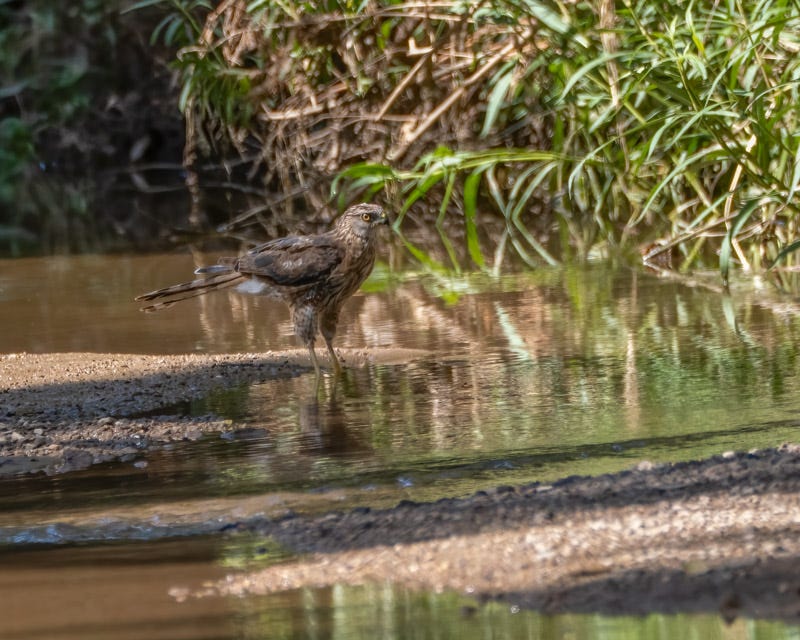
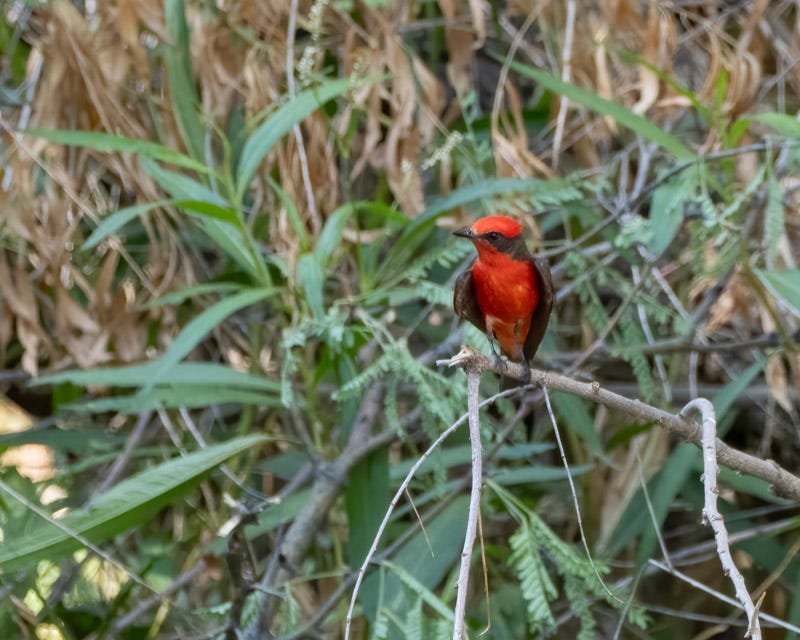

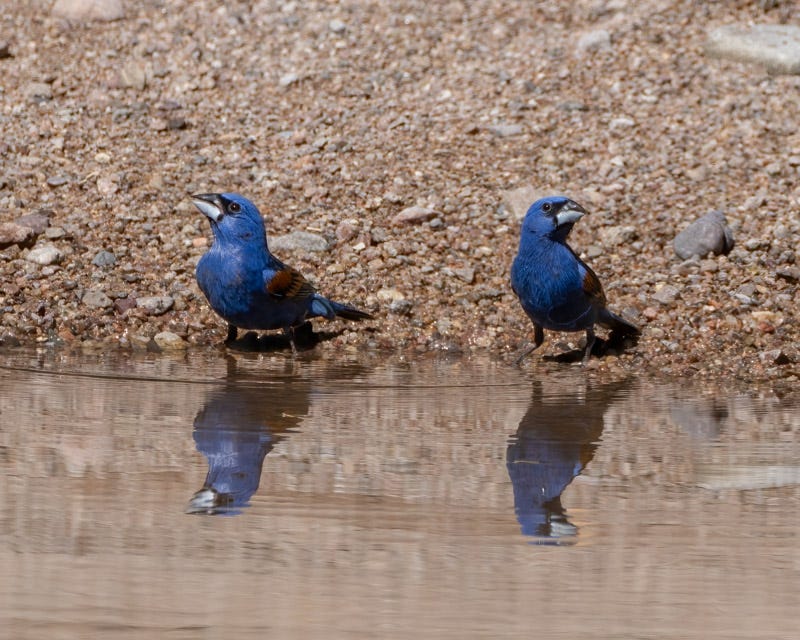
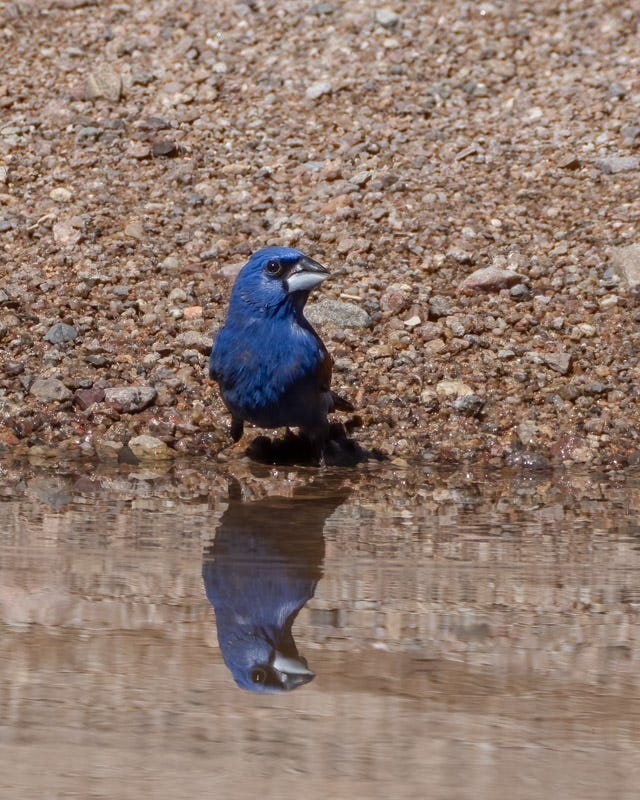
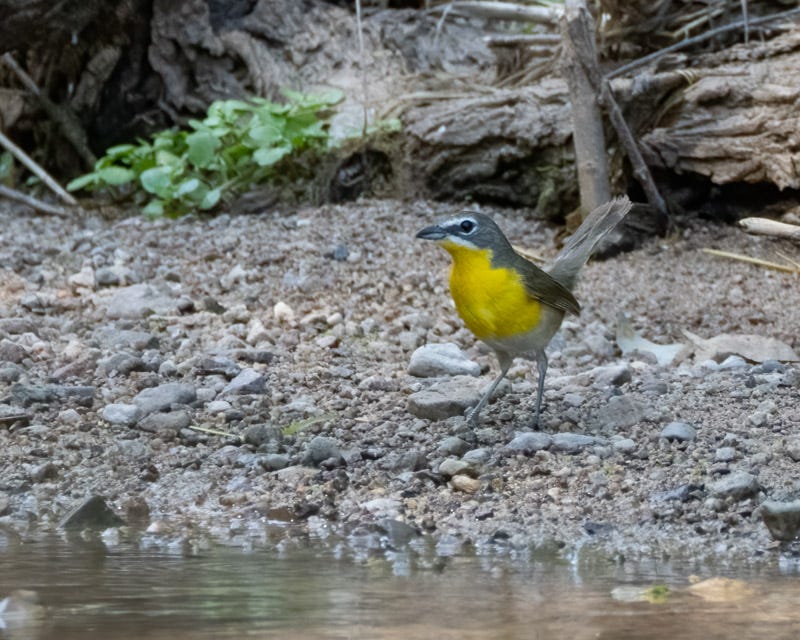
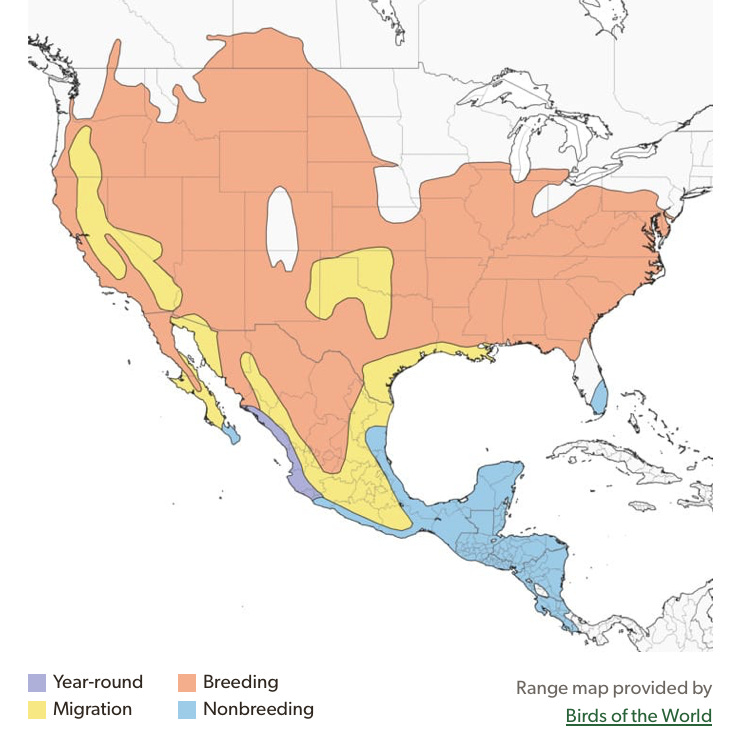
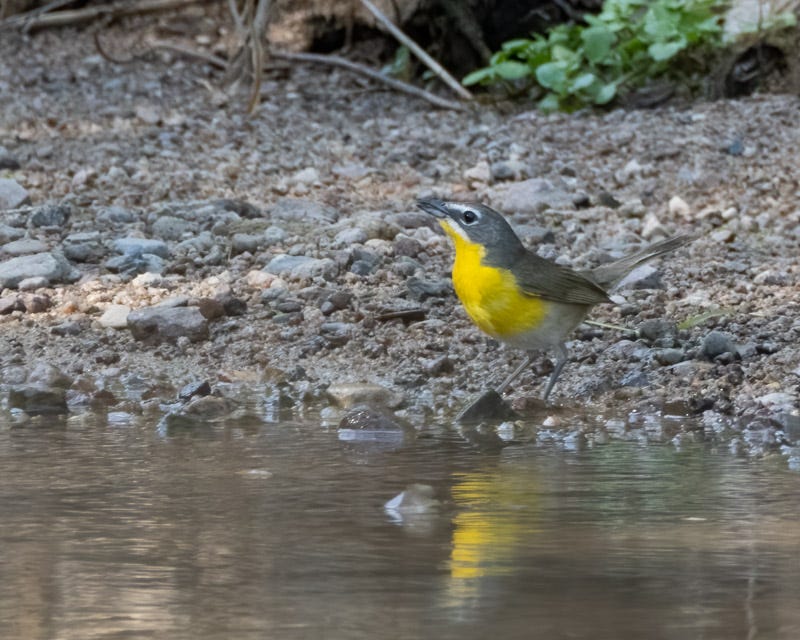
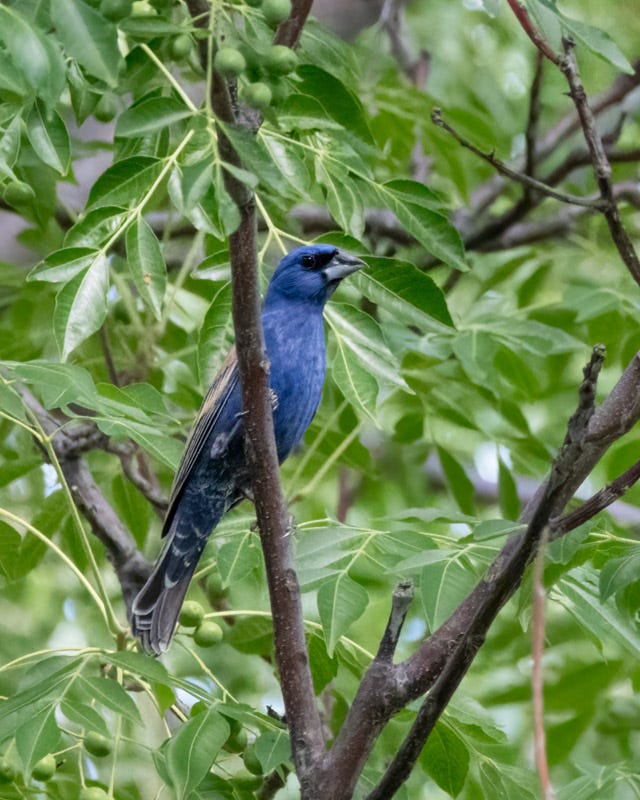
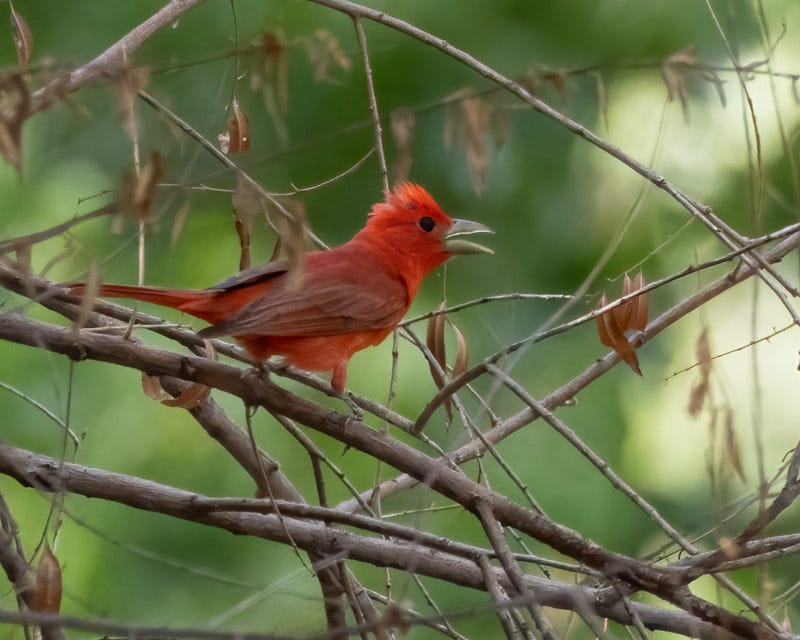
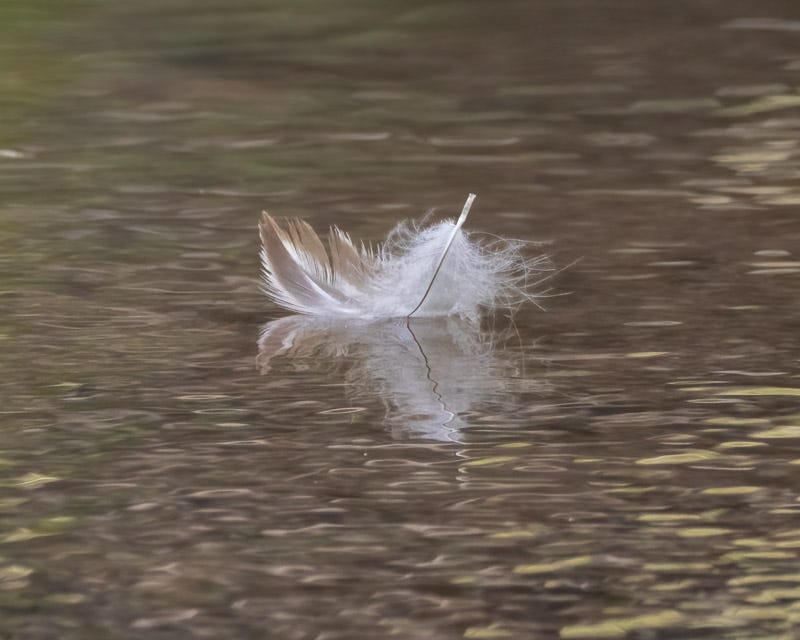

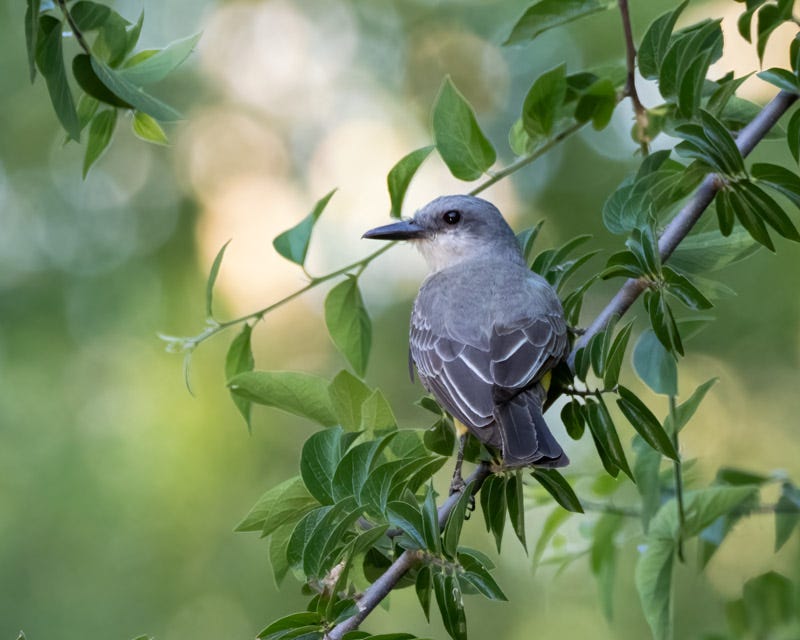
The colours of the birds are so vibrant. What a treasure to see. Thank you!
Two Blue Grosbeaks walk into a bar…